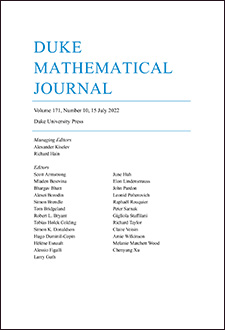Abstract
The amoeba of a holomorphic function is, by definition, the image in of the zero locus of under the simple mapping that takes each coordinate to the logarithm of its modulus. The terminology was introduced in the 1990s by the famous (biologist and) mathematician Israel Gelfand and his coauthors Kapranov and Zelevinsky (GKZ). In this paper we study a natural convex potential function with the property that its Monge-Ampére mass is concentrated to the amoeba of We obtain results of two kinds; by approximating with a piecewise linear function, we get striking combinatorial information regarding the amoeba and the Newton polytope of ; by computing the Monge-Ampére measure, we find sharp bounds for the area of amoebas in . We also consider systems of functions and prove a local version of the classical Bernstein theorem on the number of roots of systems of algebraic equations.
Citation
Mikael Passare. Hans Rullgård. "Amoebas, Monge-Ampàre measures, and triangulations of the Newton polytope." Duke Math. J. 121 (3) 481 - 507, 15 February 2004. https://doi.org/10.1215/S0012-7094-04-12134-7
Information





